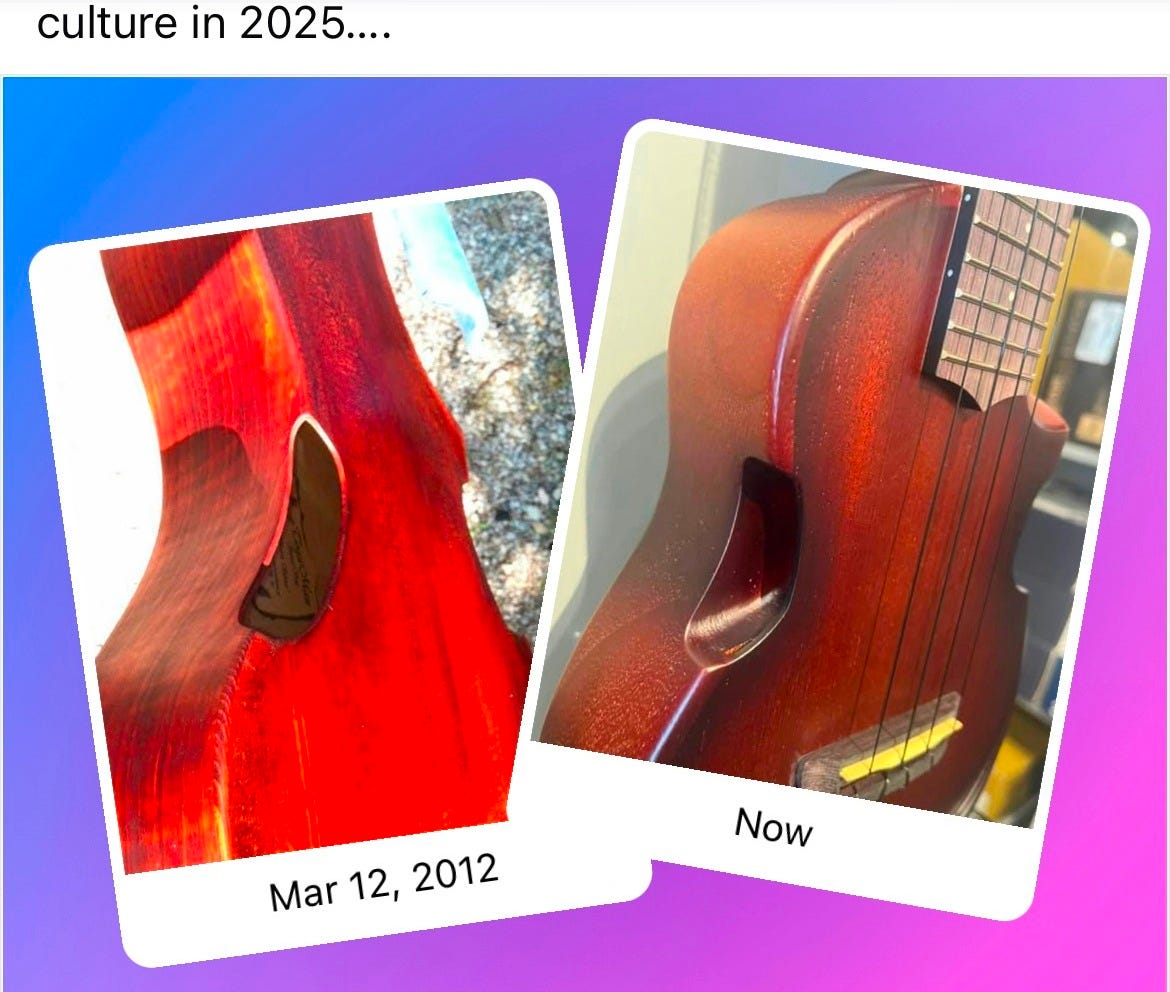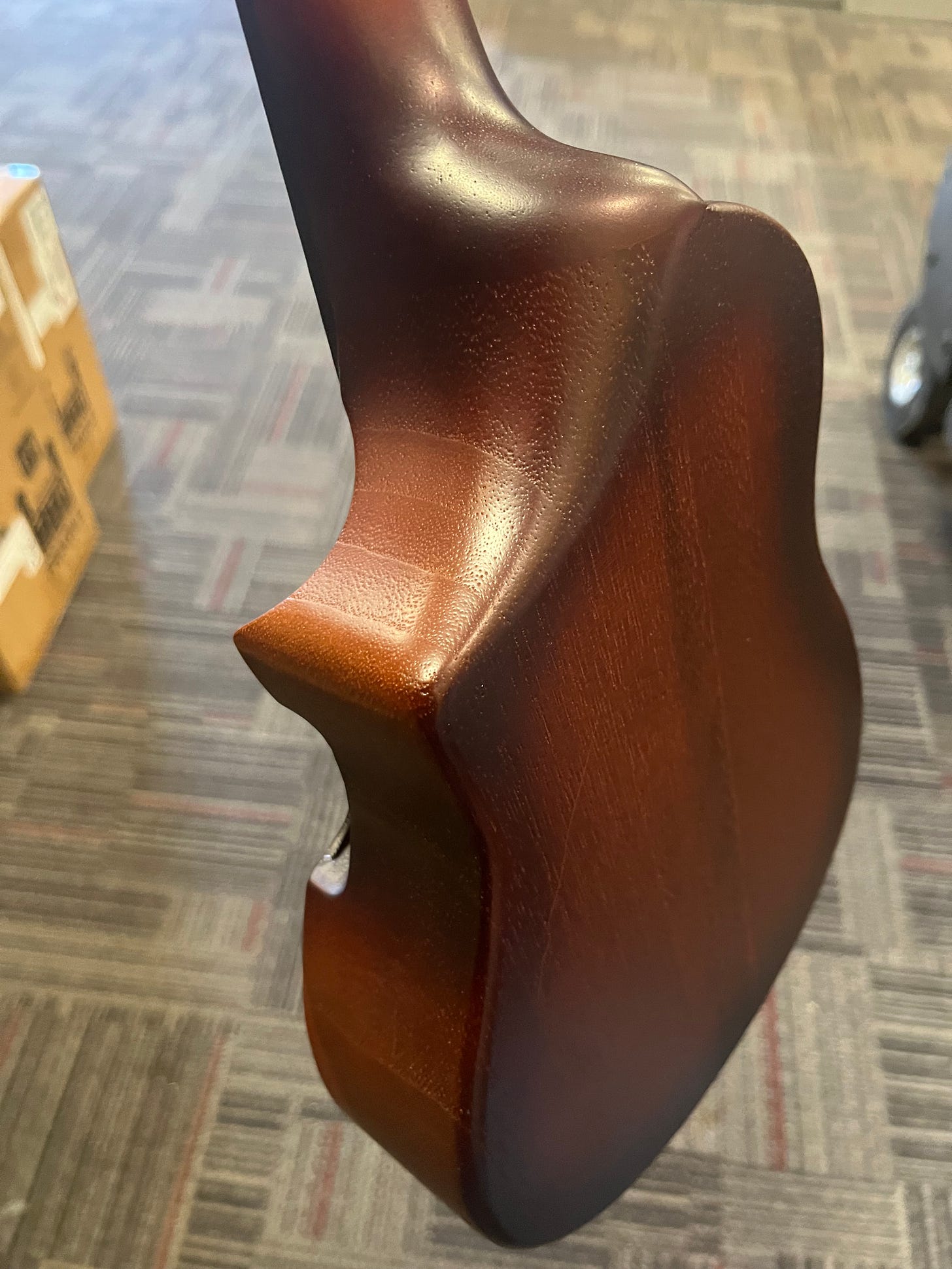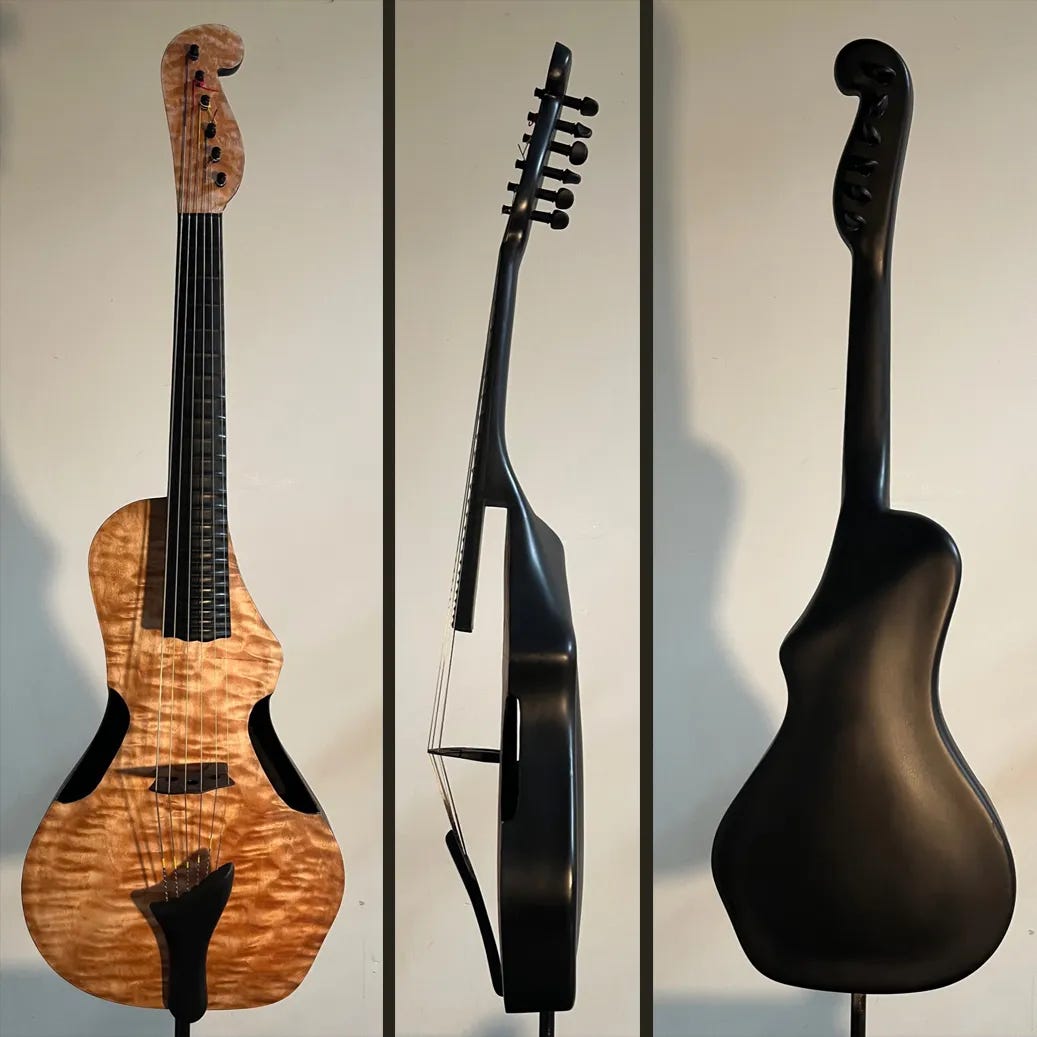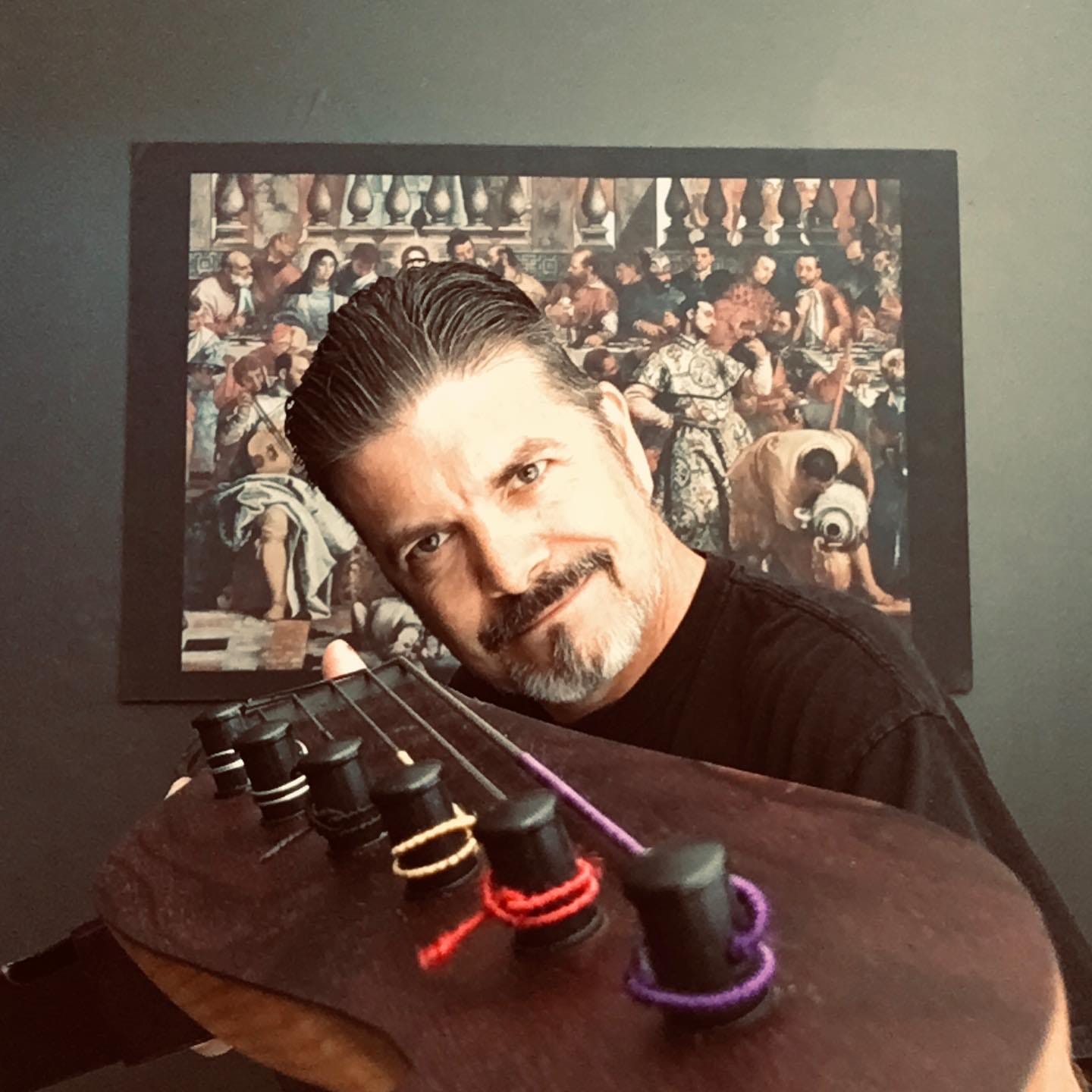The motivations of contemporary string instrument design;
How design features came to be and how they are misunderstood when emulated.

Today’s CASE STUDY:
To set the stage, here a chat GPT version of the allegory of “Grandma’s chopping the ends off the ham”.
The story of grandma chopping the ends off the ham serves as a powerful allegory about tradition, critical thinking, and the importance of questioning established practices. This narrative unfolds through a series of generations, where each family member follows a practice without understanding its origin or purpose.
The tale begins with a young girl observing her mother preparing a ham for dinner. She notices that her mother cuts off the ends of the ham before cooking it and asks why this is done. The mother’s response reflects a common tendency to adhere to tradition without questioning it: she does not know why and states that it is simply how her own mother did it.
Curious about this practice, the girl calls her grandmother to inquire further. The grandmother also admits that she does not know why they cut off the ends; she learned it from her own mother. This pattern illustrates how traditions can be passed down through generations without any critical examination or understanding of their rationale.
Finally, the girl reaches out to her great-grandmother, who provides an unexpected answer. She reveals that she cut off the ends of the ham because her baking pan was too small to accommodate a whole ham. This revelation highlights that what was once perceived as an essential step in preparing ham was merely a practical solution to a specific problem—one that no longer exists for subsequent generations.
The allegory of grandma chopping off the ends of the ham serves as a reminder to challenge conventions and seek deeper understanding in our actions and choices, ultimately leading to better decision-making and progress.
…………………………………………………………………………………………………………………………………………………..
So why do instruments look the way they do and few people question it? And why is it that so many guitar builders build stuff that looks super cool in graphic design (but uncomfortable as heck to play in real life?) And why is it that what is indeed optimal feeling in the hand might actually look ugly/weird? (Hence, the design challenge!). And why is it that features (even mistakes) get copied? I can go on a deep dive as to why I patterned the earliest (2002) GuitarViol the way I did with a 21” scale. The short version is that the previous 25.5” (early 1990’s) was beautiful to behold but a nightmare to balance. It would often go on a customized Gracie stand and that caused a lot of discomfort for the particular manner which I naturally play. (Spoiler alert: the GuitarViol was designed for yours truly - not the public - It just happened that way!). I asked myself “what would an instrument designed for my natural ergonomics look like?” My caveats were no stand, self balancing on left leg, and can fit in to an electric guitar gig bag! (Early electric). I started with cardboard and Styrofoam mockups to get into the feel ballpark and whittled away first. Once happy, I went to line drawing templates and got some wood. There is more to it but that was the starting point! “Feel first” and then sketch some semblance of aesthetics.

Now, I am going to circle over to my acoustic GuitarViol models in this “case study”. In 2006, I built the first prototype of the acoustic. The design was deliberately derived from the design caveats of the electric solid body. The first top design admittedly was that of an ugly duckling and I learned pretty quickly that what works well for X braced flat top acoustic guitars is the opposite of what works for Violin/Cello tops. It did not sound bad, but was not as bow optimal as it could have been (A deep dive by itself. Recommended reading: “The physics of music” lecture by Lloyd Loar). I loaned the prototype to Barry Cleveland (a then editor of Guitar Player Magazine who reviewed the electric back in 2005). On the trip back, it was damaged by DHL. The tire tracks on the box told the tale! DHL honored the damage claim and I removed the original (ugly) top so that I could try an experimental waist port top. Carved it out of Pine as I did not want to waste choice AAAA Spruce block on a proof of concept experiment. It became “Old Faithful” - still in service today! (*Fans of Ahsoka, Dark Winds, City on a Hill - you have definitely heard it!)
Before:

And, after:
FLASHBACK!! 2008. (I was a bit younger, awkward shorts of the times LOL) Here is the actual YouTube! (Powershot Canon, no iPhone yet). The first iteration of my signature waist-port tops! One aspect of it is BOW CLEARANCE. The other was the frontal illusion of violin ribs. Put it this way, the design stuck! The basic top design remains the same (though I have changed over to new Balsa/Hemp laminating processes which add more powerful dynamic range and won’t crack with winter weather whiplash events (another rabbit hole topic).
See Also: “The Dreaded Bastard” my 2011 experiment blending the “Bastarda” GuitarViol design with a Dreadnought flat top acoustic (Hence, the name). Predating Ibanez’s “Stereo Ports” on a plucked flat top by at least 13 years. (The first GuitarViol weist ports were introduced in 2008).



So, in summary, this essay is not intended as a Dig at Ibanez for their apparent “design inspiration”. (Although it feels funny from the author’s POV). Rather, it is a case study of NOT understanding the WHY of a particular design came about in the first place. (This is the REAL STORY) See also: The story of grandma chopping the ends off the ham allegory (first paragraph at top).
“With Ibanez’s rich history of acoustic excellence, it should come as no surprise that the company applied its decades of industry mastery to the world of ukuleles. This ukulele's sapele top elicits rich sonics with resounding presence. Its paulownia back and sides offer exceptional projection, while the okoume neck imbues your tone with a maple-like warmth and brightness. Up top, the 19-fret purpleheart fingerboard matches the spruce’s natural projection with fantastic sustain and crystalline articulation. At Sweetwater, we’re continually impressed with Ibanez and its commitment to premium appointments on every instrument, and luthiers at Ibanez [spared no effort in designing and constructing this ukulele] to meet the same exacting standard of craftsmanship”.
“Spared no effort in designing?” …… You decide.
……………………………………………………………………………………………………………………………………………………..
Consider paid subscriber tiers!
Jonathan Eric Wilson is a multifaceted creator whose work encompasses various domains, including instrument design, music culture, and personal interests. By subscribing to his paid Substack, supporters enable him to delve deeper into these areas and share his unique insights with a broader audience.
One of the primary focuses of Wilson’s work is instrument design and development. He brings a wealth of knowledge and experience to this field, which allows him to explore innovative concepts in creating musical instruments. His perspectives can provide valuable insights into:
Physics: Understanding the mechanical aspects of bowed string instruments.
Ergonomics: Designing instruments that are comfortable for musicians to play over extended periods.
Sustainability: Exploring eco-friendly practices in instrument manufacturing.
By upgrading to a paid subscription, followers gain access to in-depth discussions on these topics, potentially leading to advancements in instrument technology.
Wilson’s exploration of music culture extends beyond just the technical aspects of instruments. He examines how music interacts with society, influences trends, and reflects cultural shifts. Subscribers can expect content that covers:
Historical Context: Analyzing how different musical styles have evolved over time.
Cultural Impact: Discussing the role of music in social movements or community identity.
Global Perspectives: Highlighting diverse musical traditions from around the world.
This rich exploration helps subscribers appreciate the broader implications of music beyond mere entertainment.
As part of his offerings, Wilson likely hosts webinars and podcasts that allow for interactive learning experiences. These platforms enable him to engage directly with his audience, fostering a community around shared interests. Benefits include:
Expert Interviews: Featuring conversations with other musicians, designers, or cultural commentators.
Live Q&A Sessions: Allowing subscribers to ask questions and receive real-time feedback.
Workshops: Providing practical guidance on topics such as playing techniques or instrument maintenance.
Such interactive formats enhance the learning experience for subscribers.
Wilson’s personality shines through his witty rants on various subjects. This aspect adds an entertaining layer to his content, making it relatable and engaging for readers. His ancillary interests—food, art, wine—also enrich the narrative he presents:
Food Pairings with Music: Exploring how culinary experiences can enhance musical enjoyment.
Artistic Influences: Discussing how visual arts intersect with music creation.
Wine Appreciation: Sharing insights on how wine culture parallels musical enjoyment.
These personal touches create a more holistic view of Wilson as a creator and thinker.
Lastly, by subscribing to Wilson’s paid content, followers may also gain access to information about upcoming keynote speaker events where he shares his expertise live. These events can offer:
Networking Opportunities: Connecting with like-minded individuals who share an interest in music and culture.
Inspiration: Gaining motivation from hearing about Wilson’s journey and insights firsthand.
Learning Experiences: Attending workshops or talks that deepen understanding of specific topics related to music or design.
In summary, upgrading to a paid subscription on Jonathan Eric Wilson’s Substack not only supports his creative endeavors but also grants subscribers access to a wealth of knowledge across multiple domains including instrument design, music culture, engaging webinars/podcasts, personal interests like food and art, as well as opportunities for live interaction through keynote events. This multifaceted approach enriches the subscriber experience significantly.
Here are the basics; we’ll build this platform as we fly! And, let me know if there are some features you would like to see! -J
Basic freemium Tier:
Access to articles, current news and events covering general topics about music innovation and education.
Intermediate Tier:
Includes everything from the Basic Tier plus exclusive interviews, case studies, and access to webinars.
Premium Tier:
All previous benefits plus personalized consulting sessions, access to workshops/masterclasses, and exclusive behind-the-scenes content.
*Reach out directly if you are interested in booking a keynote event!
As always, stay tuned and stay inspired!!
Jonathan




